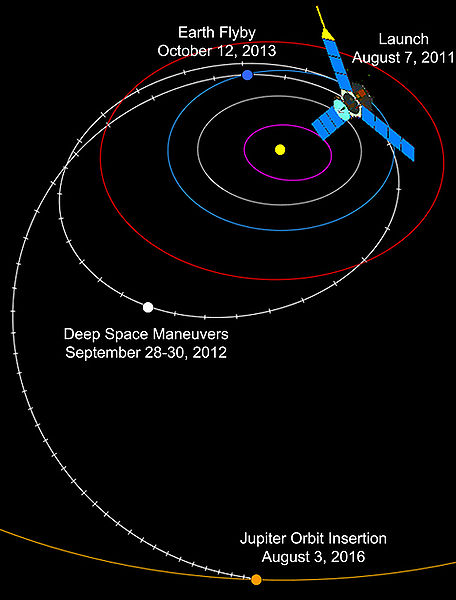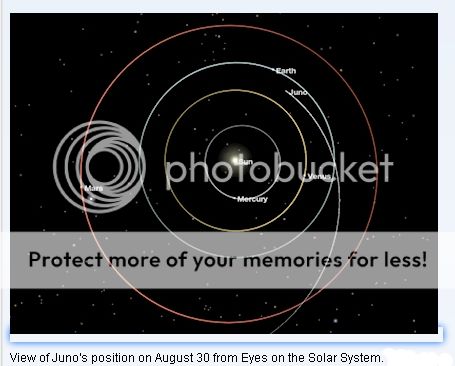Juno cleared the last major evaluation this morning when the Launch Readiness Review gave its approval for Friday's liftoff on a mission to study Jupiter. The review concluded with the signing of the launch certificate which sets the stage for launch. Liftoff remains on schedule for 11:34 a.m. EDT. It will take Juno five years to reach Jupiter, the largest planet in the solar system. It will then orbit the planet for a year conducting research to find out details about Jupiter's structure and origins.
More at NASA - Juno
More at NASA - Juno








